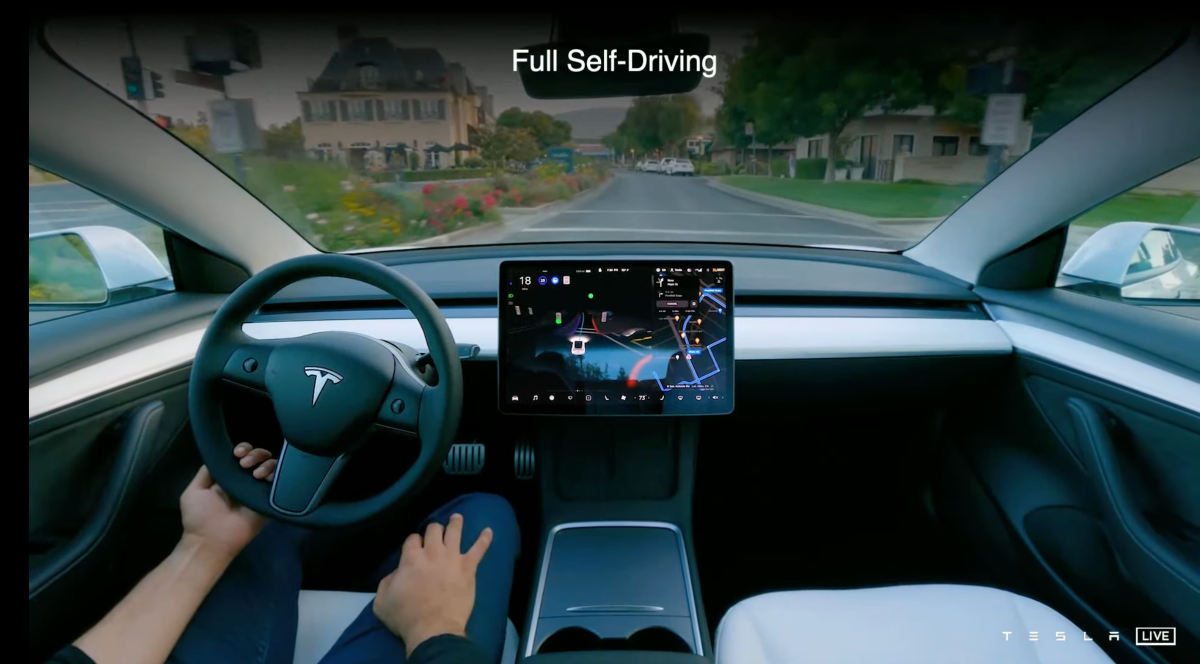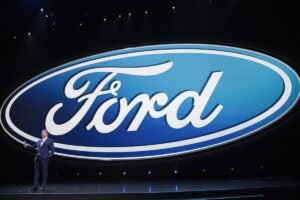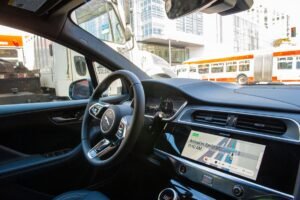According to the leaked notes, Tesla is focusing on adding more safety features to its FSD system. New features include a ‘fail safe mode’ that would prevent the car from crashing if it becomes incapacitated, and improved detection algorithms for objects in the vicinity of the car. Testers have also noted that Version 11 of FSD includes better performance and a revamped user interface.
The latest update to the Tesla fleet’s semi-autonomous driving system promises to let drivers relinquish full control of the car in city and highway driving by integrating FSD functionality with Autopilot. This single-stack system will allow drivers to take actions like responding to stop signs and traffic signals while the system handles other tasks, like automatically steering in clearly marked lanes. Given that even a small error can lead to disastrous consequences when encountering other vehicles on roads, this technology remains an important step forward for safe autonomous driving.
The latest version of FSD enables beta testing of new features on highways. Unifying the vision and planning stack on and off-highway will improve highway management.
The legacy highway stack still relies on several single-camera and single-frame networks, and was setup to handle simple lane-specific maneuvers. FSD Beta’s multi-camera video networks and next-gen planner, that allows for more complex agent interactions with less reliance on lanes, make way for adding more intelligent behaviors, smoother control and better decision making.
In a world where intelligent transportation systems (ITS) are indispensable, legacy highway stack still relies on several single-camera and single-frame networks. FSD Beta’s multi-camera video networks and next-gen planner, that allows for more complex agent interactions with less reliance on lanes, make way for adding more intelligent behaviors, smoother control and better decision making. The effortless handling of maneuvers–no matter how simple they might seem at first sight–makes these systems great candidates for autonomous driving applications.
One of the behaviors that has led to better highway driving is reliance on lanes less. When programmed to do so, the software for vehicles is less strict about centering between lane lines and allows lower jerk maneuvers. This smooths the ride and allows for more efficient travel at lane splits.
Tesla’s recent release of FSD 11 promises to make the car even more intuitive and enjoyable to drive, with an increased sensitivity for lane changes as well as improvements to merges and overall speed. The updated software is sure to please consumers who have complained about the previous iterations of Tesla’s driving software.
Version 11 of Tesla’s software seems to boast a more seamless overall experience, but it is not entirely free from issues that have led to disengagements. When disengagements happen, though Version 11 includes a voice drive notes feature that prompts the driver to record and send Tesla an anonymous message to describe what happened, this can be an effective way of addressing the issue.
#FSDBETA 11.3 including one disengagement and follow on message requesting audio description. Also, keep an eye on new visualizations before stopping at a red light and while viewing crosswalk. pic.twitter.com/OMbap1rHFn
— TeslaBull (@Winnersechelon) February 21, 2023
Recently, FSDBETA 11.3 was released that includes a new disengagement and follow on message requesting audio description. Keep an eye out for new visualizations before stopping at a red light, and while viewing crosswalk warning signals. These updates will make using the bus more convenient for riders!
TeslaBull isn’t happy with where Tesla is heading. He thinks that the company should focus on bringing more environmentally friendly cars to the market, instead of developing a new and expensive vehicle type. He also believes that Tesla could
Version 11 of the iPhone includes a revamped camera app with features like Portrait mode that renders people as 3D images. The new software makes use of depth-sensing technology to create accurate
- Expanded automatic emergency braking in the case of vehicles crossing the car’s path and stealing the right of way — this feature will be active in both manual and Autopilot operations.
- Improved Autopilot reaction time to red light and stop sign runners by 500 meters through increased reliance on an object’s instantaneous kinematics and trajectory estimates.
- Reduced latency of trajectory optimization by 20% on average.
- New visualizations with gray road edges and a wider representation of the car’s path.
FSD version 11, coming to a Tesla near you?
There is growing concern with Elon Musk’s delayed release of the latest version of FSD, as it has been several months and there is still no sign of an update. Some have speculated that this delay may be due to a potential issue with the software. Tesla drivers are eagerly awaiting an updated version, as it would allow for smoother driving and potentially safer trips.
It has been difficult to determine just how much better the new neural network technology V11 is over the older C++-based infrastructure. Responses to Twitter questions seem to suggest that it is more complex, but also that there may be more practical applications for it. Excitingly, S3 announced this week that they will start relying on V11 in their early predictions and machine learning models.
Since Tesla released its latest software update, v11.3.2, it has been collecting data from its limited beta testers in order to adapt the software for use on EU roads and submit to regulators. Musk stated that the update is still in beta testing and will be released to a wider audience later this year. With Tesla’s recent release of updated hardware, such as the Model 3 and upcoming Semi Truck, it seems that the company is taking steps toward becoming a more robust player in the automotive industry.
Tesla’s FSD is a new advanced driver assistance system that many customers are eager to try out. However, the company has issued a recall of around 360,000 vehicles with FSD in the U.S. after an analysis from the National Highway Traffic Safety Administration found that the system could allow vehicles to act unsafe around intersections and cause crashes.
Tesla has been quick to point out that when it comes to Teslas, a “recall” isn’t exactly the right word because the company fixes bugs through over-the-air software (OTA) updates, rather than physically recalling cars to dealers. OTA updates are also how Tesla sends out new versions of FSD, so it’s entirely possible that the company will use version 11 to fix the problems regulators have pointed out. One of these fixes may be adding an indicator for hands free use on caller ID when using voice commands.
Tesla’s decision to disband its communications department could have several implications for the company. Firstly, it may make it more difficult for Tesla to communicate with its customers and investors. Secondly, it could lead to a loss of knowledge within the company, which could hamper its ability to develop new products.








